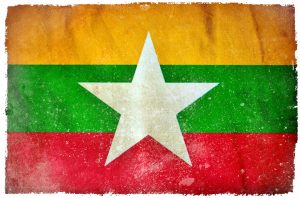As Myanmar’s armed resistance against the February 2021 coup enters its second year, calls for ethnic armed organizations (EAOs), sometimes known as ethnic revolutionary organizations, to unite and bolster ties with the resistance movement are growing louder.
This sentiment resonates not only among international observers but has also been expressed by the opposition National Unity Government (NUG), which is coordinating the resistance to the military junta that seized power in 2021. EAO alliances, such as the K3C coalition, which includes key players like the Kachin Independent Organization, Karenni National Progressive Party, and Chin National Front, are already forming. Meanwhile, the military regime is working to maintain the status quo by upholding ceasefires and engaging with some EAOs, while continuing to fight others.
In this intricate landscape have emerged several new players, such as the Bamar People’s Liberation Army (BPLA), Karenni Nationalities Defense Force, Kawthoolei Army and Chin National Defense Force. The emergence of these groups, which cooperate with the NUG and other EAOs while maintaining their autonomy, prompts the question: should they be considered EAOs, or does our understanding of EAOs need to evolve?
While the term “ethnic armed organization” is relatively new compared to the duration of Myanmar’s civil wars, which date back to the country’s independence in 1948; terms like “ethnic organizations” and “ethnic resistance forces” were previously used interchangeably. Understanding and defining the term EAO is increasingly vital as Myanmar’s conflict evolves. The term’s political significance was highlighted by the lengthy negotiations over it during the Nationwide Ceasefire Agreement (NCA) negotiations between 2013 and 2015. Even though the core text was agreed upon, disagreements over the number of signatories persisted due to the lack of consensus on the criteria for inclusion. As Myanmar’s conflict continues, how EAOs are defined could have an impact on future political negotiations and alliance formation.
At its core, any group that declares itself to be an EAO claims to represent an ethnic identity and aims to gain mutual recognition from other EAOs. The political landscape often dictates whether an ethnic group is represented by a single EAO or a coalition of them. Forming these coalitions is crucial, as are the summits of ethnic armed groups that foster mutual recognition of these alliances. In earlier years, the idea that armed groups represented ethnic communities sparked debates about whether the majority Bamar population should have its own, resulting in the formation of the Democratic Alliance of Burma in 1988. Following the coup, the aforementioned BPLA was established in areas controlled by the Karen National Union, and claimed to represent the country’s Bamar ethnic majority.
Another criterion for defining EAOs is whether they have a separate political wing. However, the distinction between political and armed wings is frequently blurred, with only major groups possessing both. Even then, the armed wing often has the upper hand. Depending on their strength and territorial control, smaller groups may be subject to the hegemony of larger forces. Nonetheless, regardless of groups’ strength or territorial control, political representation is generally granted equally within coalitions, ensuring that all voices are heard. This approach has historically contributed to the complexity of ethnic group politics and struggles for influence within alliance coalitions.
However, certain armed groups, such as the Shan Ni Army, may represent their ethnic group but struggle to gain recognition within ethnic coalitions due to their close ties with the military regime. Indeed, another criterion established by EAOs is that a group ceases to be recognized as an EAO if it begins to coordinate closely with the Myanmar armed forces, even if it continues to fly its own flag. This implies that mutual recognition as an EAO is contingent on a group’s independence from the military’s influence, even though the term is not officially defined.
Another important definitional question concerns the central state’s acceptance of an EAO as a dialogue partner. The groups that signed the NCA in 2015 were recognized on the basis that they had formed before the initiation of President Thein Sein’s 2011 peace process, and had not transitioned into people’s militias or border guard forces under the control of the central state. At the time, this approach raised concerns about inclusivity given that it excluded important EAOs such as the Arakan Army, the Ta’ang National Liberation Army, and the Myanmar National Democratic Alliance Army. While the policy was later expanded to include these groups, the criteria for becoming a dialogue partner as an EAO remains unclear. It is worth noting that being recognized as an EAO within a coalition, and prior to the coup, being viewed as a dialogue partner of the state, carry significant political weight and can be seen as conferring a degree of political legitimacy.
Historically, few EAOs or coalitions have been officially disbanded; instead, they often fade away only to reemerge later. As Myanmar’s political landscape shifts, some regime dialogue partners may lack the leverage once provided by armed conflict, especially when compared to newly established resistance forces with ethnic identity and coalitions like the Federal Political Negotiation and Consultative Committee (FPNCC). While the FPNCC grows stronger and maintains the status quo with the regime, the NUG struggles to form an ethnic alliance to boost its armed resistance efforts. Whether the NUG and existing EAOs are ready to recognize new groups as EAOs remains unclear, further complicating the evolving dynamics of Myanmar’s conflict.
Defining what constitutes an EAO has always been a challenging task. One certainty, however, is that the list of recognized EAOs may need a refresh – not just for analysis and reporting but also for political discussions – as Myanmar marks its 75th year of civil war. In this ongoing struggle, Myanmar’s “three kingdoms” – the military, popular opposition, and ethnic factions – will undoubtedly persist in their turbulent saga for the foreseeable future.

































